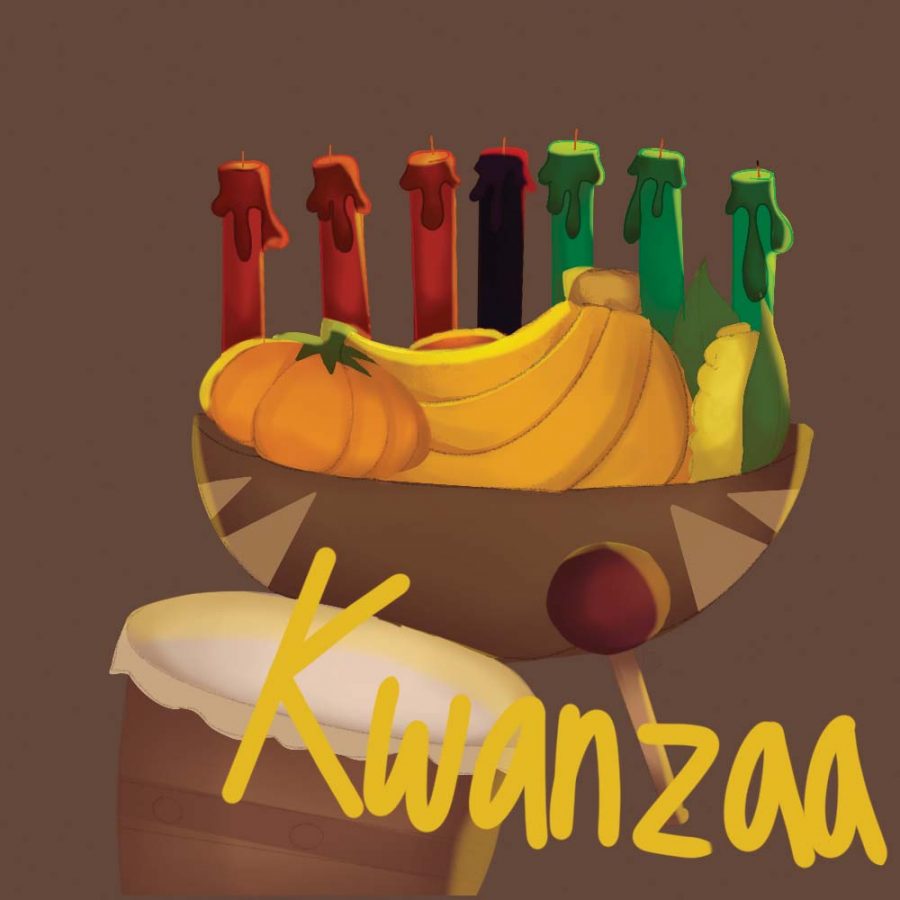Kwanzaa: A Celebration of African-American History
December 17, 2021
Every year, millions of people celebrate Kwanzaa from December 26 to January 1. Kwanzaa is a holiday meant to help those who celebrate it reconnect with and honor their African and African-American heritages.
According to the History Channel, Kwanzaa is a recently founded holiday, created in 1966 by Dr. Maulana Karenga, a professor and chairman of Black Studies at California State University. Karenga created the holiday in order to bring African Americans together as a community after the Watts Riots in Los Angeles. He combined the Ashanti and Zulu harvest celebrations to build the foundation for Kwanzaa (history.com).
During the seven days of Kwanzaa, a candle is lit each day to express dedication to the seven principles. According to the National Museum of African American History and Culture, the seven principles are Umoja (Unity), Kujichagulia (Self-Determination), Ujima (Collective Work and Responsibility), Ujamaa (Cooperative Economics), Nia (Purpose), Kuumba (Creation), and finally, Imani (Faith). These principles are meant to help unite the African community (nmaahc.si.edu).
Throughout Kwanzaa, many people come together to feast. According to the Food Network, there are no rules for what types of food are required, but the usual meals eaten are catfish, collard greens, macaroni and cheese, jerk chicken, and gumbo. Symbolic foods are served as well, such as Mazao, which symbolizes harvest, and Muhindi, corn that symbolizes children. Additionally, during Kwanzaa, the main object placed on the table is a kinara, a candle holder with seven candles representing the seven principles (foodnetwork.com).
Other than eating, during Kwanzaa, there are many other activities to partake in. According to InterExchange, celebrations include singing, dancing, storytelling, poetry reading, and African drumming. Sophomore Yu Liu believes “…these activities, like dancing, storytelling, and African drumming help unite family members together to celebrate how far their community has come” (interexchange.org).
Like every other holiday and celebration, there is specific music played on Kwanzaa. Some popular songs include catchy tunes like “Happy Happy Kwanzaa” by Bunny Hull and “Happy Kwanzaa” by Teddy Pendergrass. Listening and singing to holiday music can heighten one’s participation in the holiday spirit and help form memories with family and friends.
The purpose of Kwanzaa is to celebrate African-American history and the strides the community has made. “Kwanzaa is a celebration of the heritage of Black Americans. It does not replace Christmas, but provides remembrance of the cultures of African countries and access to the values and languages from the continent of Africa to Black Americans and those who wish to share within it,” said Teacher Anthony Pollard.
President Bill Clinton once said, “The seven principles of Kwanzaa teach us that when we come together to strengthen our families and communities and honor the lessons of the past, we can face the future with joy and optimism.” Kwanzaa is important to millions of people and African-American history as a whole (ibtimes.com).


